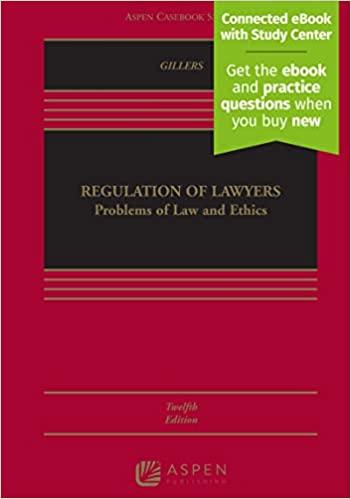Question
Scenario 1: Paramvir v. Conestoga Community Clinic One year ago, a client brought a weapon (knife) into the clinic and threatened a nurse, (Sally). Following
Scenario 1: Paramvir v. Conestoga Community Clinic
One year ago, a client brought a weapon (knife) into the clinic and threatened a nurse, (Sally). Following this incident, Sally complained to the union that management was not doing enough to protect staff in the clinic. The union launched a grievance. As a way of resolution, the management of CCHC agreed to implement a "no weapons" policy. This policy prohibiting carrying weapons into the clinic on the clinic grounds.
Two months after the implementation of this policy, Sally observed a staff member carrying a large knife under his shirt. She alerted management immediately. The staff was named Paramvir and her was a community outreach worker who did not often come into the clinic. Paramvir was hired specifically to work with the Khalsa Sikh population in the community. On this day, however, he was accompanying a client to an appointment. Paramvir is a Khalsa Sikh and he readily admitted wearing his kirpan into the clinic. His supervisor informed Paramvir of the "no weapons" policy and asked him to leave the kirpan in his car. Paramvir refused and asked the union to initiate a grievance on his behalf.
Background: Of the estimated 250,000 Sikhs living in Canada at the time, more than 10% are Khalsa Sikhs - they have gone through the Amrit ceremony, symbolizing spiritual commitment. One of the duties of the Khalsa Sikh is to carry, at all times on his or her person, a kirpan, an article of faith symbolizing a spiritual commitment to law and morality, justice and order. A kirpan is a steel knife, encased and secured in a sheath, and generally worn out of sight under normal clothing.
After prolonged discussions with Paramvir and Union, the CCHC administration amended its weapons policy to include kirpans. It forbade Sikh staff to wear real metal kirpans at work. They could only wear a symbolic representation of the kirpan, provided it did not involve a metal blade that could be used as a weapon. Having made this amendment, the management team felt that they had balanced the religious rights of staff with their responsibility to provide a safe environment for the staff.
Paramvir was not satisfied with this amendment and took the case to the Tribunal. At the hearing, it was argued that Sikh religious practices dictate that the kirpan must be made of iron or steel and worn at all times, otherwise the Khalsa would break their holy vows. It was shown that, while the kirpan has the appearance of a weapon, it has never been used in Canada as a weapon. Furthermore, it was argued that other health care organizations did not have a policy restricting kirpans.
Discussion questions
- Did Paramvir face discrimination? If so, what type?
- What act or code would take precedence to cover this situation?
- Was the no weapons policy discriminatory?
Step by Step Solution
There are 3 Steps involved in it
Step: 1

Get Instant Access to Expert-Tailored Solutions
See step-by-step solutions with expert insights and AI powered tools for academic success
Step: 2

Step: 3

Ace Your Homework with AI
Get the answers you need in no time with our AI-driven, step-by-step assistance
Get Started


